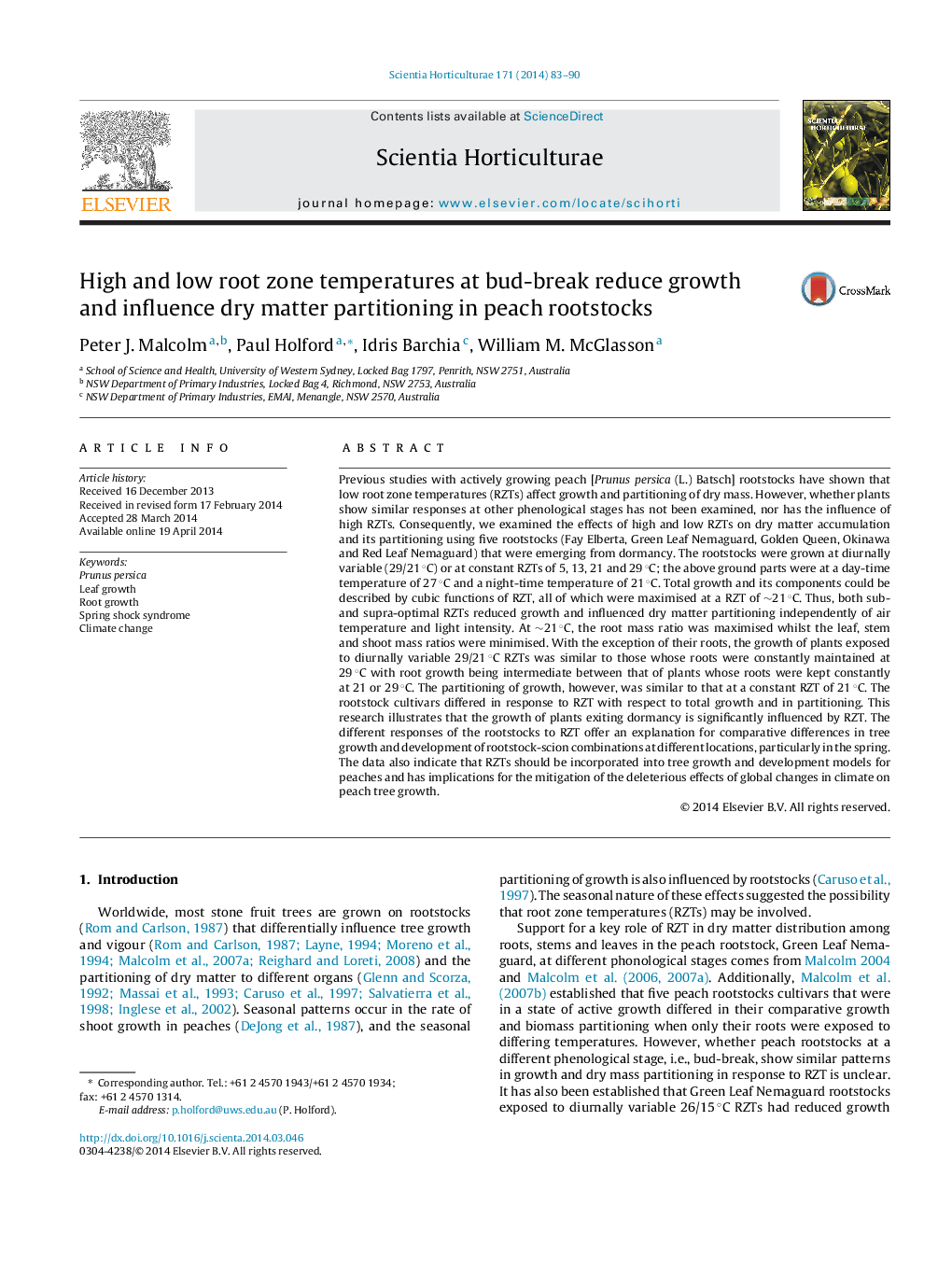| کد مقاله | کد نشریه | سال انتشار | مقاله انگلیسی | نسخه تمام متن |
|---|---|---|---|---|
| 4566785 | 1628827 | 2014 | 8 صفحه PDF | دانلود رایگان |
• High and low root temperatures affected dry matter partitioning of 5 peach rootstocks.
• At 21 °C, the root mass ratio was maximised.
• At 21 °C, the leaf, stem and shoot mass ratios were minimised.
• The growth of plants exiting dormancy was influenced by root temperature.
• Root temperature may affect rootstock-scion development.
Previous studies with actively growing peach [Prunus persica (L.) Batsch] rootstocks have shown that low root zone temperatures (RZTs) affect growth and partitioning of dry mass. However, whether plants show similar responses at other phenological stages has not been examined, nor has the influence of high RZTs. Consequently, we examined the effects of high and low RZTs on dry matter accumulation and its partitioning using five rootstocks (Fay Elberta, Green Leaf Nemaguard, Golden Queen, Okinawa and Red Leaf Nemaguard) that were emerging from dormancy. The rootstocks were grown at diurnally variable (29/21 °C) or at constant RZTs of 5, 13, 21 and 29 °C; the above ground parts were at a day-time temperature of 27 °C and a night-time temperature of 21 °C. Total growth and its components could be described by cubic functions of RZT, all of which were maximised at a RZT of ∼21 °C. Thus, both sub- and supra-optimal RZTs reduced growth and influenced dry matter partitioning independently of air temperature and light intensity. At ∼21 °C, the root mass ratio was maximised whilst the leaf, stem and shoot mass ratios were minimised. With the exception of their roots, the growth of plants exposed to diurnally variable 29/21 °C RZTs was similar to those whose roots were constantly maintained at 29 °C with root growth being intermediate between that of plants whose roots were kept constantly at 21 or 29 °C. The partitioning of growth, however, was similar to that at a constant RZT of 21 °C. The rootstock cultivars differed in response to RZT with respect to total growth and in partitioning. This research illustrates that the growth of plants exiting dormancy is significantly influenced by RZT. The different responses of the rootstocks to RZT offer an explanation for comparative differences in tree growth and development of rootstock-scion combinations at different locations, particularly in the spring. The data also indicate that RZTs should be incorporated into tree growth and development models for peaches and has implications for the mitigation of the deleterious effects of global changes in climate on peach tree growth.
Journal: Scientia Horticulturae - Volume 171, 26 May 2014, Pages 83–90
